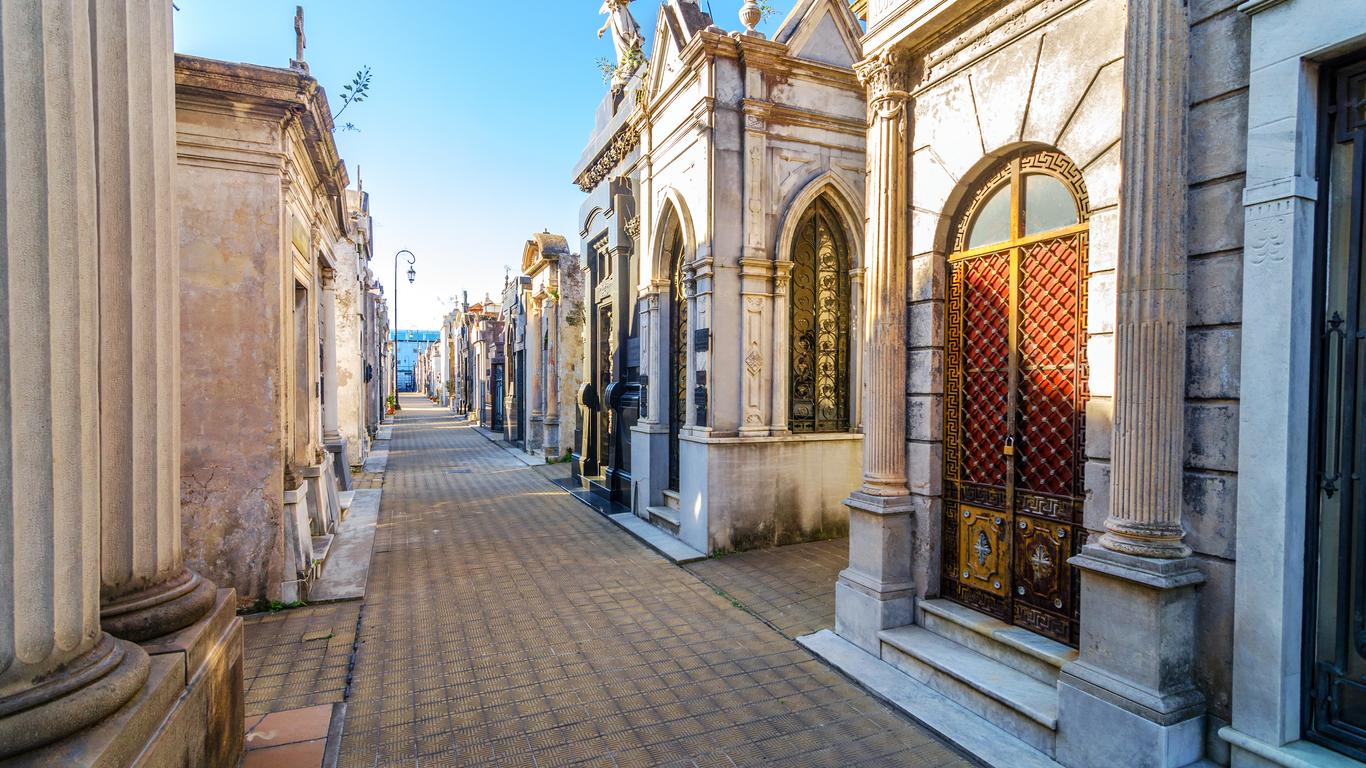Home to Latin America’s most iconic cemetery and lined with European-inspired architecture, Recoleta is one of Buenos Aires’ most upmarket residential neighbourhoods. It lies north-east of the city centre and borders the affluent residential areas of Almagro, Palermo and Retiro.
La Recoleta Cemetery is its undisputed highlight, filled with lavish and crumbling tombs dedicated to some of Argentina’s most prominent citizens. First Lady Eva Peron, poet Jose Hernandez and actress Zully Moreno are buried here, together with Argentinian presidents and military leaders. It is considered one of the most beautiful cemeteries in the world, with a diverse array of architectural styles in its mausoleums and with the whitewashed church of Nuestra Señora del Pilar standing alongside. Adjacent to the cemetery is the interactive Museo Participativo de Ciencias which features a range of hands-on exhibits focusing on science and technology, together with the artisan market of Plaza Francia. This public square features a sculpture given to Argentina by the people of France on the 100th anniversary of the country’s independence and lies adjacent to the Museo Nacional de Bellas Artes. Prominent works by Rembrandt, Gauguin, Titian and Goya are among its extensive collection, displayed within a converted drainage pumping station. Also of note is the Brutalist-style architecture of the newly-built Biblioteca Nacional Mariano Moreno which is situated nearby. On the other side of Plaza Francia is the Palais de Glace art gallery, a beautiful French-style Belle Epoque building dating to 1911, and situated near the opulent shopping strip of Avenida Alvera. To the south of the cemetery sprawls Recoleta’s attractive residential area, dotted with designer boutiques, upmarket restaurants, chic bars and tango venues.
Recoleta is easily accessed along the Buenos Aires Subway, with stations at Santa Fe, Las Heras and Agüero. Public buses also serve the neighbourhood, with stops around Plaza Francia within walking distance of most sights.
Recoleta was named for the Franciscan Monastery of the Recollect Fathers which established a church dedicated to Nuestra Señora del Pilar in the area at the beginning of the 18th century. Towards the end of the 19th century, wealthy families began moving into this higher elevation neighbourhood to escape the yellow fever outbreak which was spreading across the city, transforming Recoleta into one of the city’s most stylish residential addresses.





